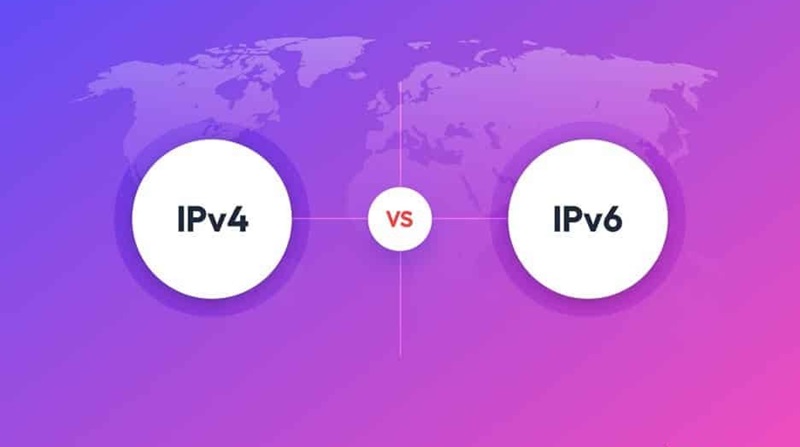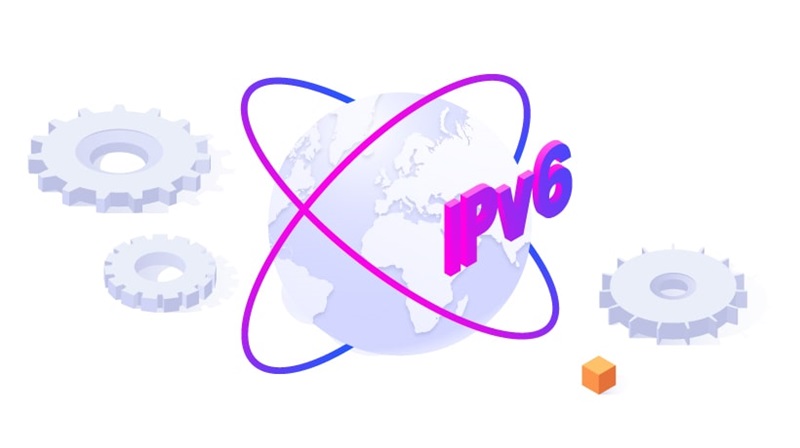The road to universal IPv6 adoption has been marked by unexpected shifts and challenges. When the Internet was first developed, the original protocol, IPv4, was equipped with approximately 4.3 billion addresses. Given the nascent state of the internet at that time, this seemed an ample sum. However, the explosive growth of the internet and the advent of smartphones, IoT devices, and other connected technologies led to the rapid exhaustion of these addresses.
This unexpected shift compelled the introduction of IPv6, which offers a virtually unlimited number of addresses. However, the transition from IPv4 to IPv6 has been anything but smooth. Despite the clear advantages of IPv6, including enhanced functionality and security features, several organizations have been slow to adopt it. This sluggishness can be attributed to various factors such as costs associated with the transition, compatibility issues, and lack of awareness.
Nevertheless, the necessity for IPv6 adoption is becoming increasingly apparent as businesses and consumers continue to demand more internet-connected devices. To facilitate this transition, tech firms are creating innovative solutions to overcome the associated challenges. Despite these efforts, the road to universal IPv6 adoption remains a winding one, fraught with unexpected shifts and challenges. The journey, however, is crucial for the continued growth and evolution of the internet.
Understanding the Shift to IPv6
The shift to IPv6, or Internet Protocol version 6, represents a significant evolution in the way the internet operates. This change was necessitated by the explosion of internet-connected devices and the subsequent exhaustion of available addresses under the previous protocol, IPv4. IPv6 offers a vastly larger pool of IP addresses, a critical factor in accommodating the increasing number of devices requiring unique identifiers for internet connectivity.
Beyond the increase in available addresses, IPv6 also offers improvements in terms of efficiency, security, and functionality. For instance, IPv6 simplifies the packet header structure used in data transmission, leading to more efficient routing and packet processing. It also supports in-built IPsec (Internet Protocol Security), enhancing data integrity and confidentiality. Furthermore, IPv6 allows for better multicast and anycast abilities, fostering device-to-device communication. Despite these advantages, the transition to IPv6 has been slow and gradual, primarily due to the costs associated with upgrading hardware, software, and training personnel.
Additionally, there are inherent complexities in running a dual-stack network that supports both IPv4 and IPv6 during the transition phase. Nevertheless, the shift to IPv6 is inevitable and is being progressively implemented worldwide. Understanding this shift is fundamental for network administrators, IT professionals, and even everyday internet users, given its profound impact on internet functionality and future growth potential.

Why IPv6 is Becoming a Necessity
The Internet Protocol version 6, or IPv6, is becoming a necessity due to the rapidly expanding global digital landscape. The previous version, IPv4, is limited and cannot accommodate the ever-increasing number of devices requiring an IP address for internet connectivity. IPv4 has a maximum of approximately 4.3 billion unique addresses, a number that has almost been exhausted due to the proliferation of smart devices, IoT gadgets, and the need for continuous online presence. On the other hand, IPv6 offers a virtually unlimited number of IP addresses, specifically around 340 undecillion, effectively future-proofing the internet.
Moreover, IPv6 provides an inherent advantage in terms of efficiency and speed. Thanks to its simplified packet header structure, data transmission is streamlined, leading to faster and more reliable internet connections. It also supports multicasting, which allows bandwidth-intensive packet flows, like multimedia streams, to be simultaneously delivered to multiple recipients, conserving network bandwidth.
Additionally, IPv6 improves upon the security measures that were only optional in IPv4. It natively supports Internet Protocol Security (IPsec), a protocol suite that authenticates and encrypts each IP packet in a data stream. This is particularly essential in today’s hyper-connected world, where cybersecurity threats are a constant concern.
Lastly, the transition to IPv6 is inevitable as it ensures the scalability and sustainability of the internet. It’s not just about accommodating more devices; it’s about being prepared for future technological innovations that we may not have even conceived of yet. As more businesses and services move online, and as we become even more digitally interconnected, IPv6’s extensive capacity, improved performance, and enhanced security make it not just a better choice, but a necessary one. To ensure the continued growth and evolution of the internet, embracing IPv6 is a must.
Challenges in Transitioning to IPv6
Transitioning from Internet Protocol version 4 (IPv4) to Internet Protocol version 6 (IPv6) presents numerous challenges that are both technical and operational in nature. One of the notable hurdles is the incompatibility between the two versions. IPv4 and IPv6 are not directly interoperable, meaning a significant overhaul of internet infrastructure is necessary to ensure seamless communication. This requires substantial financial investment and considerable time to upgrade or replace old equipment, reconfigure networks, and conduct extensive testing to ensure stability and security.
Another challenge is the lack of knowledge and skilled personnel to implement and manage IPv6. It is a complex and relatively new technology, and there is a shortage of professionals who understand its intricacies. This necessitates additional financial expenditure for training and capacity building.
The security concerns present another significant obstacle. Although IPv6 has inherent security features, such as IPSec, which were not part of the original IPv4, it also introduces new vulnerabilities. This is because most existing security tools and practices are designed with IPv4 in mind. Adapting these tools for IPv6 or developing new ones is a challenging task, particularly considering the evolving nature of cyber threats.
The process of transitioning also involves dealing with the co-existence of both protocols, known as dual-stack networking. This can lead to complexities in managing, monitoring, and troubleshooting the network, as well as potential performance issues.
In addition, there are challenges associated with address management. IPv6 introduces a vastly larger address space than IPv4. While this is one of the key advantages of IPv6, it also complicates address management and can increase the complexity of network operations.
Overall, the transition to IPv6 is a complex process involving multiple challenges. It requires careful planning, substantial resources, and a thorough understanding of the new protocol and its implications for network architecture, operations, and security. Despite these difficulties, the transition is necessary to sustain the continued growth and evolution of the internet.

Impact of IPv6 on Internet Infrastructure
IPv6, also known as Internet Protocol version 6, is the latest version of the Internet Protocol. This protocol is tasked with providing an identification and location system for computers on networks and routes traffic across the Internet.
The advent of IPv6 has had significant implications for the Internet’s infrastructure. One of the most noticeable effects has been the resolution of the address space exhaustion problem that was prevalent with its predecessor, IPv4. With its 128-bit address space, IPv6 can support approximately 3.4×10^38 addresses, a colossal increase from the 4.3 billion addresses that IPv4 could handle. This increase means that the Internet can continue to grow without restrictions, accommodating the proliferation of devices and users in today’s digital age.
Moreover, IPv6 has significantly improved the efficiency of data routing and packet processing. The hierarchical structure of IPv6 addresses simplifies the handling of data packets in routers, making the routing more efficient. Additionally, the streamlined packet header in IPv6 reduces the time and resources required for packet processing.
With regard to network security, IPv6 presents a double-edged sword. On the one hand, the protocol has inbuilt support for IPsec (Internet Protocol Security), which provides end-to-end encryption and authentication. However, on the other hand, the vast address space of IPv6, coupled with its ability to self-configure, can potentially be exploited by malicious actors to launch sophisticated cyber-attacks.
Finally, IPv6 also has implications for Quality of Service (QoS). The protocol’s Flow Label field allows packets belonging to the same flow to be identified and handled appropriately, thus enabling better support for QoS.
In conclusion, the impact of IPv6 on Internet infrastructure is profound and multifaceted. It offers solutions to the limitations of IPv4, enhances efficiency in data routing and packet processing, and presents both opportunities and challenges in terms of network security and QoS. It is, therefore, a critical element in the evolution of the Internet.

Impact of IPv6 on Internet Infrastructure
The advent of IPv6, or Internet Protocol version 6, has revolutionized the backbone of the internet infrastructure in a number of critical ways. As the internet expanded exponentially, the previous version, IPv4, was unable to keep up with the demand for unique IP addresses due to its limited capacity. IPv6 was introduced to resolve this issue, offering an almost limitless supply of IP addresses, thus ensuring the possibility of continued internet expansion. Moreover, it also added additional layers of security, a much-needed feature in our growing digital world.
With IPv6, internet service providers (ISPs) and businesses are able to manage network traffic more efficiently. It improves the routing and network auto-configuration capabilities, making it easier for data packets to reach their correct destinations promptly. The simplified packet structure of IPv6 also reduces the processing load on routers, thereby enhancing the overall performance of the network.
Another significant impact of IPv6 on the internet infrastructure is its potential to facilitate the Internet of Things (IoT). With a virtually infinite number of IP addresses, it can accommodate the rapidly growing number of internet-connected devices. This is important for the development and advancement of smart homes, cities, and industries, where every device requires its own IP address to function effectively.
However, transitioning from IPv4 to IPv6 is not without challenges. It requires substantial changes to the internet infrastructure and can be time-consuming and costly. Also, interoperability issues may arise as both versions do not communicate directly with each other. To overcome this hurdle, techniques such as dual-stack networks, tunneling, and translation are being used.
In conclusion, IPv6 has significantly impacted the internet infrastructure by providing a solution to the address exhaustion issue, enhancing security, and paving the way for IoT. While the transition process presents some challenges, the benefits of IPv6 are so profound that it is increasingly being adopted worldwide. The future of the internet undoubtedly lies with IPv6.
